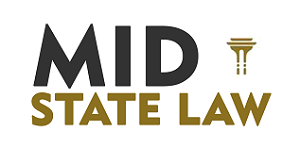When you’re wrongfully terminated, it’s easy to feel like the odds are stacked against you. Your employer likely has an entire legal team that will fight to protect the company’s reputation and minimize damages. If you’ve decided to pursue a wrongful termination claim, it’s essential to understand the types of defenses your employer might use to justify your firing.
In this post, we’ll break down some of the most common defenses employers raise in wrongful termination cases, and how you can fight back.
1. “At-Will Employment”
The Defense:
One of the most common defenses is the claim that the employee was “at-will” and therefore can be fired for any reason, or even no reason at all, as long as it isn’t for an illegal purpose.
What It Means:
At-will employment is the default rule in many states, meaning that an employer can end the employment relationship without cause, and the employee can leave at any time without notice.
The Employer’s Argument:
“Since the employee was at-will, we were allowed to terminate them for any reason—even if that reason is unrelated to the allegations they’re making.”
Why It’s Weak:
While at-will employment does give employers significant leeway, it doesn’t protect them from firing an employee for illegal reasons. For example, you cannot be fired because of your race, gender, age, disability, or for exercising rights protected under the law (like whistleblowing or taking medical leave).
What to Do:
To counter this defense, you’ll need to show that your termination was due to an illegal reason, such as retaliation, discrimination, or breach of contract.
2. “Performance Issues” or “Poor Job Performance”
The Defense:
Another common defense is that the termination was due to poor performance, and that the employer had every right to terminate an employee who wasn’t meeting job expectations.
What It Means:
Employers often argue that the employee’s job performance or conduct was the reason for their firing, and not any unlawful motives.
The Employer’s Argument:
“Our employee wasn’t meeting company standards, so we decided to terminate them. This has nothing to do with the protected activities they claim occurred.”
Why It’s Weak:
If the employer’s claim about poor performance is baseless or inconsistent, it’s a weak defense. For example, if you’ve received positive performance reviews, awards, or promotions prior to your firing, it may be difficult for your employer to justify a sudden decision based on performance.
What to Do:
If your employer claims performance issues, you’ll need to present evidence of your positive performance history—such as reviews, awards, and emails praising your work. Additionally, show any inconsistencies in the employer’s claims.
3. “Business Needs” or “Restructuring”
The Defense:
Employers often argue that layoffs or terminations are due to business needs, such as a company restructuring, downsizing, or budget cuts.
What It Means:
The employer may claim that your position was eliminated as part of a necessary restructuring or that they had to make tough financial decisions that resulted in your termination.
The Employer’s Argument:
“We had to let go of several employees due to budget constraints, and your position was one of those eliminated.”
Why It’s Weak:
While restructuring or downsizing can be legitimate, employers sometimes misuse this defense to cover up unlawful termination. For instance, if only employees who complained about discrimination, took medical leave, or belong to a protected group were let go, this is suspicious.
What to Do:
You should request documentation related to the restructuring or downsizing (such as meeting minutes or internal communications). If your position was eliminated but other employees were hired to do similar work shortly after, it may indicate that the real reason for your termination was something else.
4. “Legitimate Business Decision”
The Defense:
Employers might argue that they made a legitimate business decision in firing you, and that their actions weren’t unlawful.
What It Means:
In many cases, this defense refers to business-related decisions that fall within the employer’s discretion, such as firing for certain behavioral infractions or policy violations.
The Employer’s Argument:
“Our decision to terminate the employee was based on business reasons, and they had violated our policies, which justify the firing.”
Why It’s Weak:
If the employer’s “business decision” was a cover-up for discrimination, retaliation, or another illegal action, this defense won’t hold up in court. Additionally, if the company’s stated policy wasn’t enforced uniformly or consistently, it could reveal bias.
What to Do:
Examine company policies and see if they were applied equally to other employees. If other employees who violated the same policy weren’t fired, or if the decision seems inconsistent with your previous performance, you can argue that the firing wasn’t based on legitimate business needs.
5. “Lack of Evidence” or “No Witnesses”
The Defense:
Some employers argue that there’s simply no evidence to support the employee’s claim of wrongful termination.
What It Means:
Employers may claim that the employee lacks witnesses or documentation to prove that the firing was illegal, or that the employer didn’t engage in discriminatory or retaliatory behavior.
The Employer’s Argument:
“There’s no evidence to support that the employee’s firing was due to discrimination, retaliation, or any other unlawful reason. It was just a business decision.”
Why It’s Weak:
While the burden of proof lies with the employee, employers often struggle to explain inconsistencies in the firing process or shifting justifications for the termination. Inconsistent statements, gaps in evidence, or conflicting testimony can weaken the employer’s defense.
What to Do:
Keep meticulous records, including performance reviews, emails, meeting notes, and any communications that support your case. If witnesses can corroborate your claims, make sure they provide written statements or are prepared to testify.
6. “Waivers or Settlement Agreements”
The Defense:
If you signed a severance agreement or waiver of claims upon leaving your job, the employer might argue that you’ve already agreed to waive any future legal action.
What It Means:
Employers might argue that any legal claims you could raise were already settled through an agreement that you signed upon leaving the company.
The Employer’s Argument:
“Since the employee signed a waiver or severance agreement, they’ve already agreed not to pursue a wrongful termination claim.”
Why It’s Weak:
Such agreements may not be enforceable if they were signed under duress, involve unlawful terms, or didn’t provide you with adequate consideration (e.g., you weren’t offered anything beyond what you were already entitled to).
What to Do:
Have an attorney review any severance or waiver agreements to determine if they are enforceable or if you can pursue a claim despite the agreement.
Conclusion: Preparing for Employer Defenses
Understanding the defenses your employer may raise is essential to strengthening your wrongful termination case. With the right documentation, witnesses, and legal advice, you can challenge these defenses and pursue justice. We recommend wrongful termination lawyers maryland.







